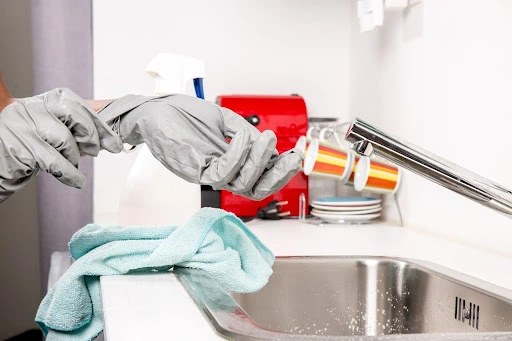In recent years, the cleaning industry has increasingly turned to technology in an effort to enhance operational efficiency and organisational prowess. These technological solutions, ranging from sophisticated scheduling tools to comprehensive task management systems, are intended to streamline the processes and workload involved in maintaining cleanliness and order. This shift towards digital assistance aligns with the “Getting Things Done” (GTD) philosophy, which is tailored to maximise productivity by systematically organising and tackling tasks.
However, the adoption of GTD-focused technology in the cleaning sector does not always translate to success. While the theoretical benefits are clear—improved efficiency, better resource allocation, and reduced operational stress—the practical outcomes often tell a different story. In this article, we will explore the nuances behind why these technological solutions sometimes fall short of their promise, delving into the challenges and limitations that prevent them from fully delivering on their intended benefits. This discussion will not only shed light on the specific obstacles faced but also offer insights into the critical balance between technology and human oversight within the cleaning industry.
The Aim of Technology in “Getting Things Done” within Cleaning Services
The integration of technology in the cleaning industry primarily focuses on enhancing the “Getting Things Done” approach, essential for managing tasks efficiently to maintain a clean house. This strategic implementation includes the use of advanced scheduling software, robust task management applications, and dynamic client communication systems. These technologies are specifically tailored to simplify the management of cleaning tasks, ensuring that every aspect of the service is handled with precision and efficiency. The benefits anticipated from such technological enhancements include more streamlined operations, improved time management, and heightened customer satisfaction. By adopting these tools, cleaning companies aim not just to clean effectively but to elevate the entire process of service delivery, aligning it closely with the principles of the “Getting Things Done” methodology in the cleaning sector.
Common Pitfalls of Implementing GTD Technology in Cleaning

Integrating “Getting Things Done” technology into everyday tasks in the cleaning industry presents multiple challenges that can hinder its effectiveness. A common issue is technical glitches, which can disrupt the functionality of scheduling systems and task management applications. These interruptions not only cause delays but can also frustrate staff and managers, leading to a loss in productivity rather than the expected gain.
Resistance from staff is another significant barrier. Many employees are accustomed to traditional, non-digital methods and may view new technologies with skepticism or distrust. This resistance is often compounded by a steep learning curve associated with these systems. New technology typically requires substantial training, which can be both time-consuming and costly. For many cleaning companies, particularly smaller ones, the resource investment in training can be a significant deterrent.
Furthermore, even when staff are trained, the usability of the technology itself can pose problems. If the systems are not user-friendly or intuitive, it can lead to further resistance and reduced efficiency, as staff struggle to integrate these tools into their daily routines effectively.
Case Studies: When GTD Technology Falls Short
Consider the experience of a medium-sized cleaning company that implemented a new task management app, aiming to enhance productivity and streamline communication among team members. Despite initial optimism, the app failed to meet expectations. The interface was not intuitive, leading to prolonged adaptation periods that hindered rather than helped productivity. The app also lacked customization options necessary for the specific needs of the cleaning tasks and client requirements, resulting in a mismatch between the tool’s capabilities and the company’s needs.
Another example involves a large cleaning service provider that introduced a sophisticated scheduling software designed to optimise job assignments and manage client appointments more efficiently. However, the software was often unable to adapt to the unpredictable nature of cleaning jobs, where last-minute cancellations or changes are common. The rigid structure of the software meant that managers had to spend more time manually adjusting schedules, which negated the supposed efficiency gains from the technology.
These case studies highlight the importance of choosing appropriate technology that fits the specific operational needs of a cleaning business. They also underscore the necessity of providing adequate training and ensuring that any new system is flexible enough to handle the dynamic and often unpredictable nature of cleaning services.
Human Element vs. GTD Technology
In the cleaning industry, the nuanced needs of clients and the dynamic nature of cleaning tasks often require a level of adaptability and personal judgment that GTD technology alone cannot provide. While these technologies aim to streamline processes, they sometimes lack the flexibility to adjust to real-time changes, such as last-minute client requests or unexpected cleaning challenges. Human intervention is crucial in these scenarios, where decisions must be made quickly and with a deep understanding of the client’s specific preferences and requirements. Over-reliance on technology can lead to a disconnect between the service provided and the client’s expectations, potentially resulting in dissatisfaction and the loss of business. The human element—understanding, empathy, and improvisation—plays an irreplaceable role in ensuring the high standards of service that technology strives to support but cannot fully achieve on its own.
Improving GTD Technology Adoption and Functionality
To better harness the potential of GTD technology in the cleaning industry, several strategies can be employed. First, comprehensive training should be provided to all users, ensuring that staff are comfortable and proficient with the new systems. This training should be ongoing to accommodate updates and new features. Secondly, choosing adaptable tools that can be customised to fit the specific needs of the business and its clients is crucial. These tools should allow for flexibility in scheduling and task management to cope with the industry’s unpredictability. Finally, incorporating regular feedback mechanisms can help in continuously refining the technology. Feedback from both employees and clients should be used to make iterative improvements to the system, ensuring that the technology evolves in response to the actual needs and experiences of its users.
Conclusion
Throughout this discussion, it has become clear that while GTD technology offers significant potential to enhance productivity and efficiency in the cleaning industry, it also presents certain challenges. The key to realising the benefits of such technology lies in striking the right balance between digital tools and human oversight. Only through a thoughtful integration of technology, complemented by human insight and adaptability, can cleaning businesses truly meet and exceed customer expectations. This balanced approach will not only improve operational efficiency but also ensure that the service quality remains high, leading to greater client satisfaction and loyalty.






